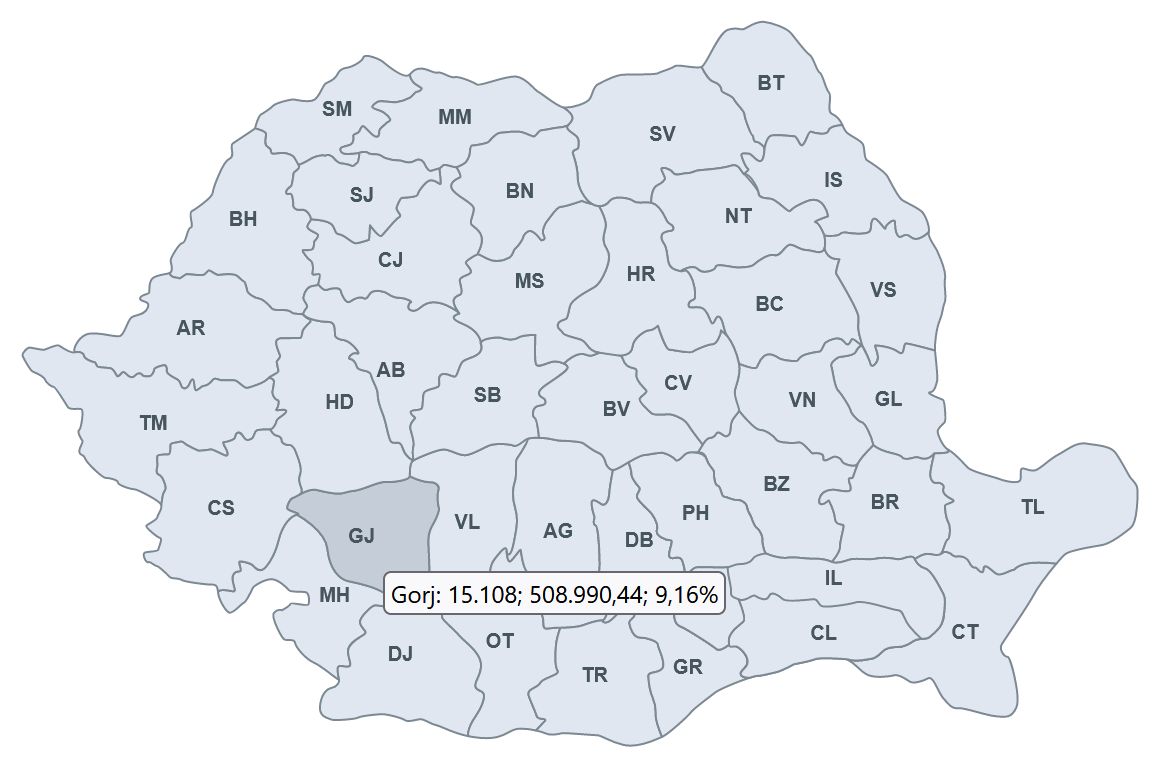
Approximately 50,000 public social or service buildings are not insured by the municipalities of large cities against earthquakes, floods and landslides, despite legal obligations and sanctions. And this is not surprising, since sanctions are given by the mayors, and in 13 years none has been applied.
Insuring their homes against earthquakes, floods, and landslides is not only required by law for the population and companies, but also for municipalities that own social or service housing, and official data show that the state does not fulfill what it is obligated to do by law.
More than 60 municipalities do not have insured housing
Data from PAID (Pool de Asigurare Optoriva Desastrelor), a private insurance company that issues compulsory PAD home insurance policies and pays disaster compensation, sent to HotNews.ro at a request, shows that in the last quarter of last year there were more than 60 municipalities with tens of thousands of homes owned and zero PAD insurance for them.
- “As of December 31, 2022, according to the National Institute of Statistics, there were 118,602 public buildings in Romania. Of these, 80,000 are located in municipalities, 18,000 in cities and 20,000 in communes.
- So far, we have only taken municipal level data, which suggests that only 30,000 homes were insured in the last quarter of 2022, less than 38% of the total.
- In terms of the number of municipalities with more than 10% of insured public housing, we have only 37 municipalities out of 105. We also have 62 municipalities that do not have any insured housing.” Cosmin Tudor, PAID’s development director, told HotNews.ro on Wednesday.
In Tirgu-Zhiu, no public housing is insured

For example, in Gorge County, which was hit by a 5.7-magnitude earthquake on Tuesday, at the end of last month only 9.16% of all homes were compulsorily insured under a PAD policy against earthquakes, floods and landslides.
As for the public housing situation, Tirgu Jiu City Hall owned nearly 1,000 houses at the end of last year, none of which were PAD insured.
Below are some examples of municipalities with zero public housing insurance at the end of last year
- Târgu Jiu – with almost 1000 houses in ownership, 0 insured
- Râmnicu Vâlcea – about 1300 houses, 0 insured
- Resita – out of almost 1,000 houses, 0 are insured
- Drobeta Turnu Severyn – 900 houses and 0 insured
At the opposite pole are also municipalities that have insured their own houses:
- Timisoara – about 1,500 houses, of which 1,400 were insured
- Sibiu – about 1100 houses, 97% insured
- Hunedoara – about 700 houses, all insured
- Deva – about 1,000 houses, of which 700 are insured
In Bucharest there are about 9,500 public buildings, all of which were covered by PAD policies, PAID data shows.
Why don’t municipalities provide these houses, even though it is a legal obligation?
- “As part of the project, thanks to which I visited several town halls, I collected information. The main reasons why they are not insured are related to the budget. Municipalities have a lot of priorities, and it is difficult to find a place to provide housing among them.” says Cosmin Tudor.
The explanation is also that fines should be applied by mayorsbut in the 13 years since the application of the law 260/2008, no mayor has resorted to this sanction in order to avoid being taxed by the poll tax.
- “We have no information on the imposition of any fines under Law 260/2008.” also accepts official FEE.
How do mayors know who has home insurance and who doesn’t?
Cosmin Tudor also clarified for HotNews.ro that “mayors have access to the PAID database based on credentials (without access data), they have permanent access to policies issued within the agreed UAT and thus can see the difference who he does not have an insured home.”
- “Unfortunately, more than 20 town halls out of approximately 3,200 do not enter this area, and these are not the largest in terms of population.
- Another problem is the non-updating of the lists of houses assessed and assigned to the first class of seismic risk, we have old lists from 2008, and the municipalities should update them,” said the PAID development director.
The latest figures from PAID (Pool de Asigurare Optoriva Desastrelor), a private insurance company that issues compulsory PAD home insurance policies and pays out compensation in the event of disasters, show that there were 1,850 active .373 PADs at the end of January this year. policies, which is 19.30% of the national housing stock.
75% of houses insured by PAD are located in cities.
Read more also:
- Romanians would be even less likely to insure their homes if they did not have loans. Some consider it a disguised tax – What does the ASF correspond to?
- “Traps” in mandatory home insurance: why some people are denied compensation
- Only two out of ten houses in Romania are insured against earthquakes: why Romanians do not insure their houses, even though it is required by law
Source: Hot News
Lori Barajas is an accomplished journalist, known for her insightful and thought-provoking writing on economy. She currently works as a writer at 247 news reel. With a passion for understanding the economy, Lori’s writing delves deep into the financial issues that matter most, providing readers with a unique perspective on current events.